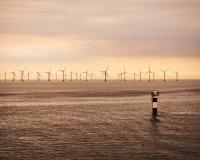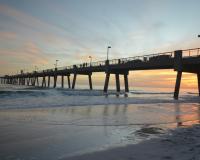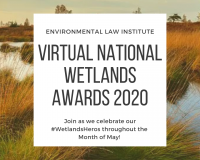
Vibrant Environment
All
All | Biodiversity | Climate Change and Sustainability | Environmental Justice | Governance and Rule of Law | Land Use and Natural Resources | Oceans and Coasts | Pollution Control

In his 2019 article, Governing Extinction in the Era of Gene Editing, Prof. Jonas J. Monast of the University of North Carolina School of Law recommends using the Endangered Species Act (ESA) framework to regulate the growing use of gene-editing technology.

Heralded in 1970 as the nation’s “environmental Magna Carta,” the National Environmental Policy Act’s (NEPA’s) future seems uncertain. As Trump Administration initiatives threaten to diminish and perhaps even dismantle aspects of NEPA, an article in the May issue of ELR—The Environmental Law Reporter chronicles how this merely continues NEPA’s unfortunate trajectory, examining how the courts, the U.S.

Washing hands—repeatedly—is the first line of defense against the COVID-19 virus. Now, more than ever, water is seen an essential element of life.
Although the pandemic indiscriminately attacks rich and poor, old and young, worldwide, it does victimize one out of every four humans disproportionately. These are the 2.2 billion persons who lack clean water. They lack the “luxury” of washing hands, or bathing or drinking clean water.

If you have walked across downtown Manhattan recently, you may have been blinded by the new colorful green pavement marking protected bike lanes. NYC is one of many cities flaunting their new bike safety initiatives in political speeches, tourist brochures, and subway ads. Given the multiple economic, health, and environmental benefits of replacing car trips with bike trips, their pride is well-deserved. But in order for such initiatives to serve all New Yorkers, they must go a step further.

If you have walked across downtown Manhattan recently, you may have been blinded by the new colorful green pavement marking protected bike lanes. NYC is one of many cities flaunting their new bike safety initiatives in political speeches, tourist brochures, and subway ads. Given the multiple economic, health, and environmental benefits of replacing car trips with bike trips, their pride is well-deserved. But in order for such initiatives to serve all New Yorkers, they must go a step further.

As our global energy demand continues to rise, our dependence on renewable energy sources will inevitably increase as well. The offshore wind industry is a fairly new sector within the energy space. Although the United States is already one of the world’s largest onshore wind energy markets, there remains a substantial amount of growth potential off of our shores.

As our global energy demand continues to rise, our dependence on renewable energy sources will inevitably increase as well. The offshore wind industry is a fairly new sector within the energy space. Although the United States is already one of the world’s largest onshore wind energy markets, there remains a substantial amount of growth potential off of our shores.


The Environmental Law Institute (ELI) is pleased to announce the winners of the 31st Annual National Wetlands Awards: Mark Beardsley; John W. Day Jr.; Trinity Favazza; Ted LaGrange; Sam Lovall; and Robert Wade. Together, these awardees have restored, researched, and protected thousands of acres of wetlands nationwide; their examples have inspired many members of their community to act and make a difference to protect and improve these vital natural resources.
